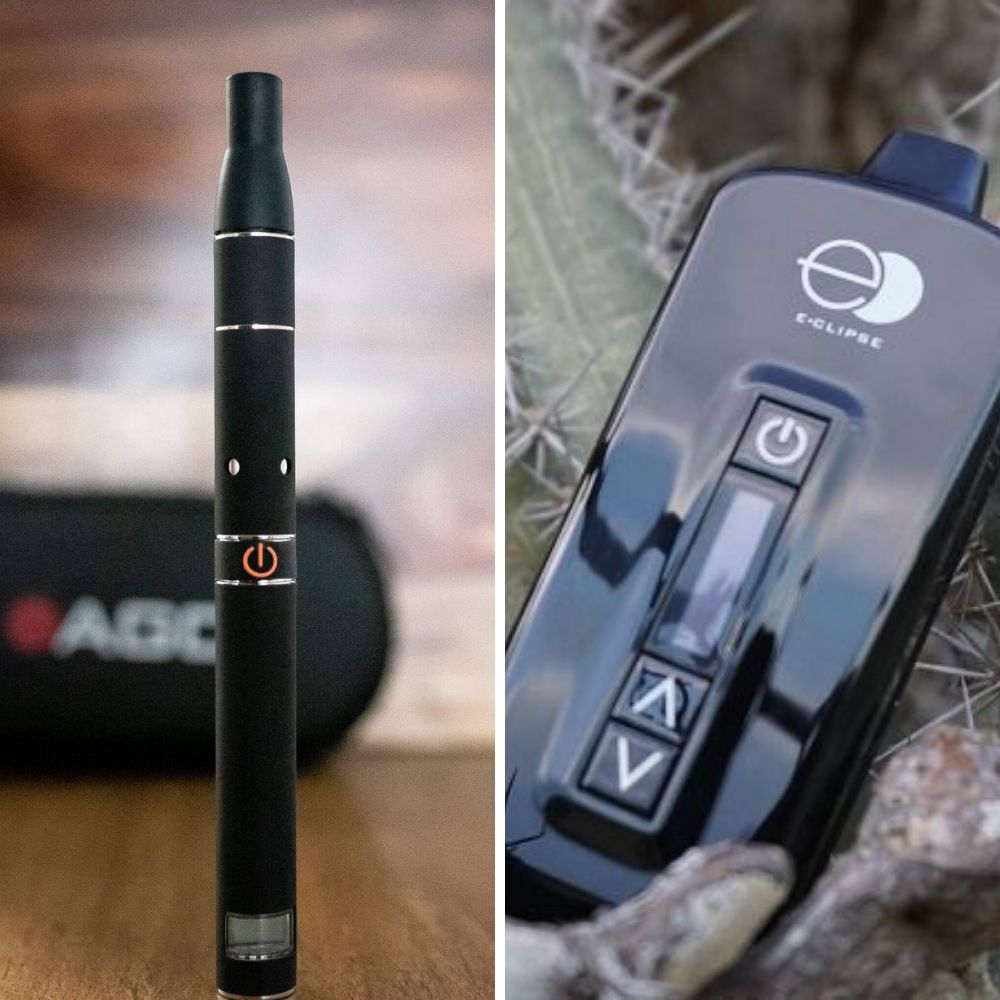
Share
Do Dry Herb Vaporizers Produce Smoke?
Most Dry Herb Vaporizers Do Not Produce Smoke
In most instances, dry herb vaporizers use the process of convection heating to circulate high-temperature air around the material, which boils off the aromatics, turns them into liquid particles, suspends them in the air, and results in a vapor that can be inhaled. This process is starkly different than a traditional pipe, which uses a flame to combust the herb and produce smoke.
With these details in mind, some dry herb vapes do use combustion to burn the herb and produce smoke, just like pipes. In this article, we will quickly discuss which popular vaporizer models produce smoke, which ones do not, and what these differences could mean for you.

Dry Herb Vaporizers That Produce Smoke
Combustion vapes heat dry herbs inside a closed chamber to a high enough temperature (usually greater than 430°F) that they react with oxygen in the air and combust; i.e., catch on fire and burn. As a result, these devices produce smoke that can be inhaled through an attached mouthpiece.
Popular examples of dry herb vaporizers that produce smoke include the AGO Vape, Yocan Evolve D, and SteamCloud Vape Pen batteries with dry herb cartridges.
What about smoke-free vaporizer models?

Dry Herb Vaporizers That Do Not Produce Smoke
Most dry herb vaporizers do not produce smoke, so you will find that they are more common than combustion models.
This is because dry herb convection vaporizers operate similar to a convection oven, which circulates hot air (typically between 200°F and 400°F) inside a chamber. When the original, room-temperature air inside this chamber converges with the hot air generated by the vape’s battery, it causes the heat to enter the dry herb quickly, evenly, and efficiently.
Finally, instead of burning (combusting) the dry herb, the chamber’s heat gives off a liquid-based vapor that can be inhaled.
Popular examples of dry herb vaporizers that do not produce smoke include the E-CLIPSE, DaVinci Vaporizers, Titan 1, Titan 2, and Pulsar APX 2.
Next, we will take a brief look at some of the differences between vapor and smoke and what they might mean to you in the real world.

What’s the Difference Between Smoke and Vapor?
On the one hand, vaporizing dry herb maintains its original molecular state, since the heat that passes through turns it into liquid particles (an aerosol) that become suspended in the air.
On the other hand, lighting dry herb on fire and combusting it drastically changes its chemical composition, and can actually create secondary substances, many of which are potentially harmful. Common examples include carbon monoxide, tar, metal oxides (lead, mercury, nickel, cadmium, chromium), ammonia arsenic, benzene, formaldehyde, hydrogen cyanide, isoprene, and quinoline.
Over time, repeated exposure to these particulates and chemicals can build up in the body and negatively affect the brain, bone, cardiovascular, and immune system function. In fact, inhaling these particulates repeatedly can even increase your risk of developing certain types of cancer.
Compared to airborne particulates from combustion smoke, the liquid particles generated by convection heating do not contain anywhere near as many harmful chemicals and other substances and typically result in less mouth and throat irritation than smoking.
Outside of the health implications, here are a few additional examples of the differences between smoking and vaping, in no particular order:
- Scent – The smoke generated by the combustion process has a much stronger smell than vapor, which will still have somewhat of a smell. However, because of the vapor's chemical composition, the scent will not be as strong as from smoking.
- Discreetness – Because vapor typically smells less and dissipates faster than smoke, it is often more discreet when you are using it in public. Keep in mind, however, that in some instances, dense vapor can dissipate more slowly than smoke, which can vary by model.
- Residue – Without all of the added chemicals and particulate matter, vapor leaves behind far less residue than smoke, whether inside your dry herb vape or on your clothes or furniture.
Related Blog Posts
Combustion vs Conduction vs Convection Vaping
What Happens When you Vape Dry Herbs?
Dry Herb Vapes that Produce Smoke Instead of Vapor
